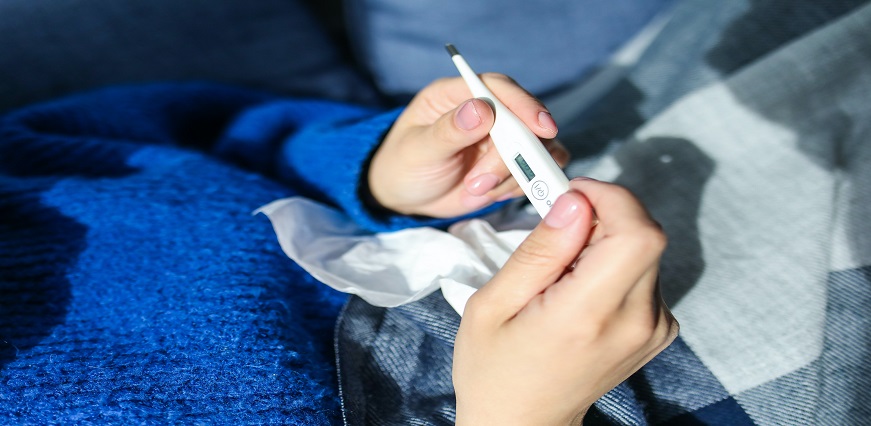





No lab centers are available in this city
Home > Procedure preparations > Widal Test Procedure - Preparation, Purpose & Test Results

The Widal test, also known as the Weil-Felix Test, is a diagnostic test used to detect the presence of antibodies in serum that can signify typhoid fever. This procedure is conducted by taking a sample of blood and measuring the number of specific antibodies present in order to diagnose typhoid fever. In this article, we'll cover what exactly the Widal Test is, how it works, and why it's an important tool for diagnosis and treatment. Read on to learn more about this valuable medical procedure!
The Widal test can be used to determine if an individual has been infected with Salmonella, and can also be used to monitor the body's response to treatment for this infection. The Widal test is not 100% accurate, and false positive results may occur in individuals who have been vaccinated against Salmonella or who have been exposed to the bacterium without actually becoming ill.
A Widal test is a blood test that is used to diagnose typhoid fever. This disease is caused by the bacteria Salmonella enterica serovar Typhi. The Widal test can also be used to diagnose other types of salmonella infections.
The Widal test is not recommended for use in children under the age of 2 years. It is also not recommended for use in pregnant women or in people who have had a recent (within 14 days) typhoid vaccination.
People who have symptoms of typhoid fever, such as a high fever, headache, stomach pain, or diarrhea, should see a doctor. A Widal test may be ordered if the doctor suspects that typhoid fever is the cause of the illness.
A doctor may prescribe a Widal test when someone has symptoms of a bacterial infection, such as typhoid fever. The test can help diagnose the cause of the illness.
The Widal test is not always accurate, and it cannot be used to diagnose an infection definitively. A positive result may be due to a false-positive reaction, meaning the person does not have an active infection. In some cases, a person may have a negative result but still have an active infection.
If you think you have an infection and your doctor prescribes a Widal test, make sure to follow their instructions for the test carefully.
A positive Widal test result may be seen in other bacterial infections such as brucellosis, leptospirosis, and Rocky Mountain spotted fever. A negative Widal test result does not necessarily mean that the person does not have typhoid or paratyphoid fever. The diagnosis of typhoid and paratyphoid fevers should be confirmed with other tests such as blood culture test, bone marrow test, or stool culture test.
The Widal test is usually done by taking a sample of blood from a vein in the arm. The blood sample is then sent to a laboratory for analysis.
There are a few things you can do to prepare for your Widal test. First, it's important to fast for at least 8 hours before the test. This means no food or drink, except for water. You should also avoid strenuous activity in the hours leading up to the test.
When you arrive for your appointment, you'll be asked to provide a blood sample. The sample will be taken from a vein in your arm, and the procedure is similar to getting a blood test done. Once the sample is collected, it will be sent to a laboratory for analysis.
If your Widal test comes back positive, your doctor will likely order additional tests to confirm the diagnosis. Treatment for typhoid fever typically involves antibiotics. With proper treatment, most people make a full recovery within a few weeks.
The Widal test is a blood test that looks for antibodies to the O and H antigens of Salmonella typhi, the bacteria that cause typhoid fever. The test can be used to diagnose an active infection or to check for immunity to the bacteria. Results from the Widal test usually take 1-2 days to come back from the lab.
 Allergy Test
Allergy Test
 Anemia Test
Anemia Test
 Auto immune
Auto immune
 Blood disorder
Blood disorder
 Bone and Joint
Bone and Joint
 Cancer Test
Cancer Test
 Cardiology Test
Cardiology Test
 Covid Recovery
Covid Recovery
 Dengue Test
Dengue Test
 Depression
Depression
 Diabetes Test
Diabetes Test
 Fatigue
Fatigue
 Fever Test
Fever Test
 Full body
Full body
 Gastro Test
Gastro Test
 Gastrointestinal
Gastrointestinal
 Gynaecology Test
Gynaecology Test
 Heart Test
Heart Test
 HIV Test
HIV Test
 Hormone Test
Hormone Test
 Hypertension
Hypertension
 Immunity Test
Immunity Test
 Infectious Disease
Infectious Disease
 Infertility Test
Infertility Test
 Influenza Test
Influenza Test
 Iron Test
Iron Test
 Kidney Test
Kidney Test
 Liver Test
Liver Test
 Lung Test
Lung Test
 Nephrology
Nephrology
 Obesity
Obesity
 Orthopedics Test
Orthopedics Test
 Physician
Physician
 Pollution Health Checkup
Pollution Health Checkup
 Pregnancy Test
Pregnancy Test
 Prostate Test
Prostate Test
 Senior Citizen Test
Senior Citizen Test
 STD Test
STD Test
 Thyroid Test
Thyroid Test
 Tuberculosis Test
Tuberculosis Test
 Vitamin Test
Vitamin Test
 Women Health Test
Women Health Test
Sign up takes less than 60 secs and gives you access to your offers, orders and lab tests.
Looks like you are not registered with us. Please Sign up to proceed
OTP will be sent to this number by SMS
We have successfully received your details. One of the agents will call you back soon.
 To reach our help desk call 9213188888
To reach our help desk call 9213188888
No Lab Centers are available in this city
Looks like you are not registered with us. Please Sign up to proceed
OTP will be sent to this number by SMS
Not Registered Yet? Signup now.Looks like you are not registered with us. Please Sign up to proceed





 7982100200
7982100200.png)